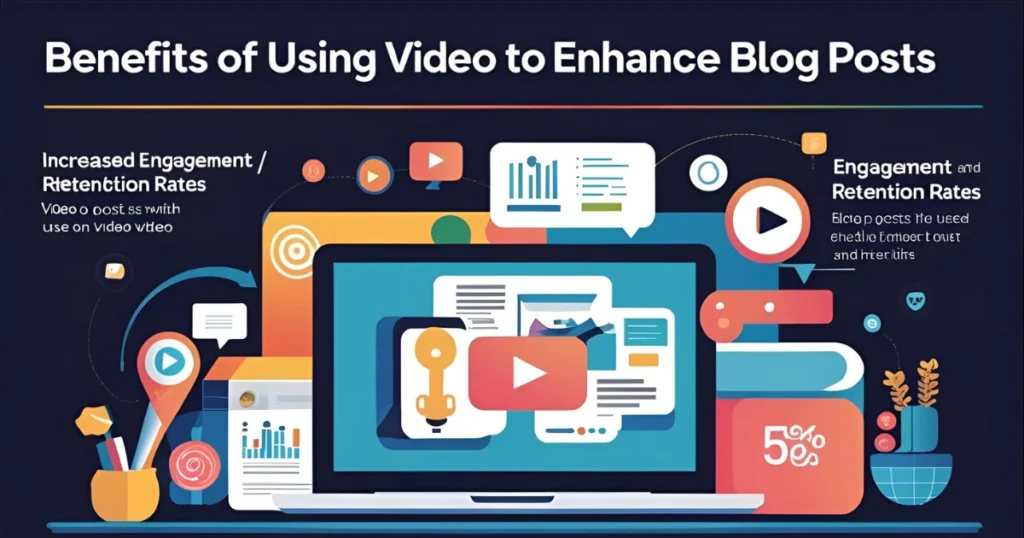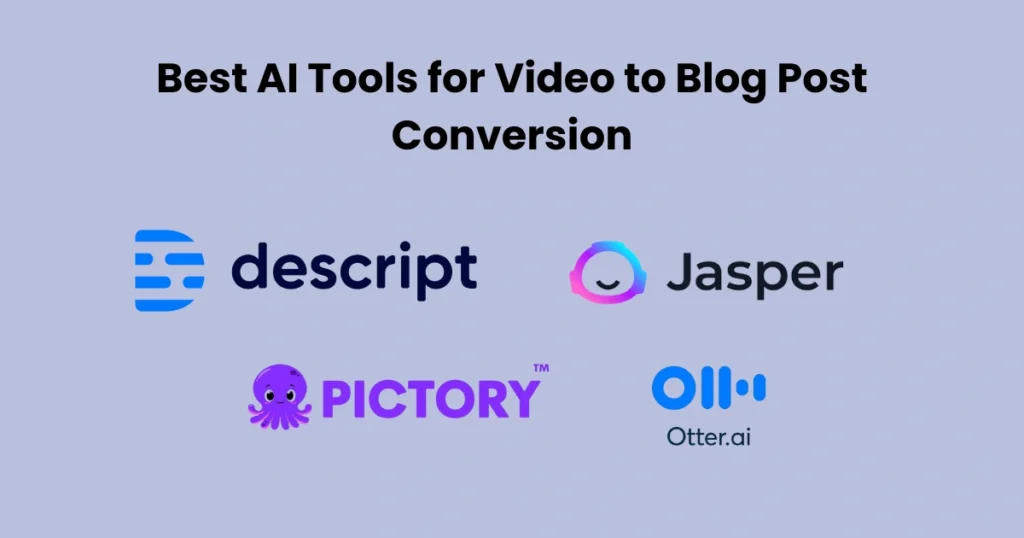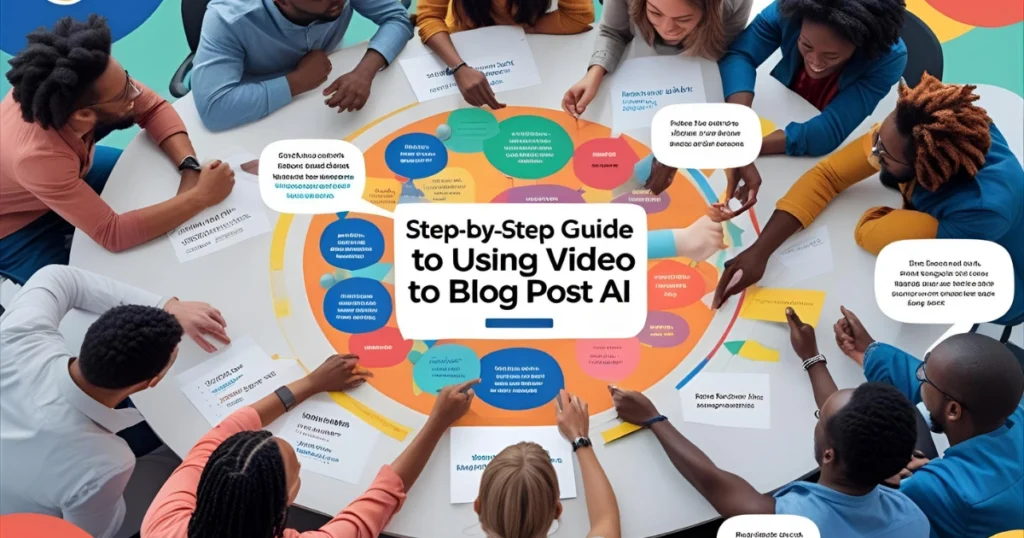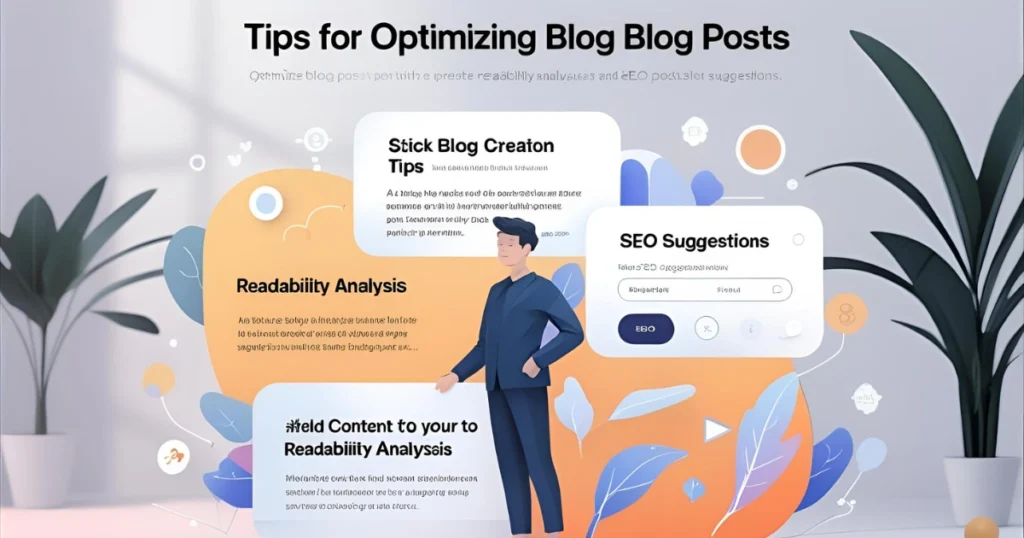
AI Content Creation
Video to Blog Post AI: Revolutionizing Content Repurposing

Contents
- 1 What Is Video to Blog Post AI?
- 2 Why Convert Video to Blog Posts with AI?
- 3 How Video to Blog Post AI Works
- 4 Benefits of Using Video to Blog Post AI
- 5 Best AI Tools for Video to Blog Post Conversion
- 6 Use Cases and Industries Benefiting Most
- 7 Step-by-Step Guide to Using Video to Blog Post AI
- 8 Common Challenges and How to Overcome Them
- 9 Tips for Optimizing AI-Generated Blog Posts
- 10 The Future of Video to Blog Post AI
In today’s content-driven landscape, video to blog post AI is emerging as a game-changer for creators, marketers, and businesses alike. This technology automatically converts spoken content from videos into well-written, structured blog posts—eliminating the need for manual transcription and rewriting. As content consumption habits shift, the demand for both visual and written formats continues to grow.
you can now turn YouTube videos, webinars, tutorials, and interviews into engaging articles in minutes. This process not only improves accessibility but also boosts search engine rankings and multiplies your content’s reach. Whether you’re a solo blogger or part of a media team, embracing this AI-powered workflow can drastically cut production time and increase content output.
What Is Video to Blog Post AI?
Video to blog post AI is a type of artificial intelligence technology that automatically converts video content into written blog articles. It uses advanced tools such as speech-to-text recognition, natural language processing (NLP), and content summarization algorithms to extract the core message of a video and repurpose it into a readable, SEO-friendly format.
Instead of spending hours transcribing, summarizing, and structuring a video manually, users can now rely on video to blog post AI to handle the heavy lifting. These AI tools identify speaker intent, detect important keywords, and format the final blog post in a way that aligns with best content writing practices.
This intelligent transformation is especially useful for creators who produce consistent video content but want to expand their online presence through written content. By using this you can multiply your content output, improve accessibility for readers, and rank higher on search engines without duplicating your efforts.
From YouTube creators and podcasters to educators and business marketers, anyone who works with video can benefit from the speed and accuracy that video to blog post AI offers. As AI continues to improve, the gap between spoken word and well-written blog content is rapidly disappearing.
Why Convert Video to Blog Posts with AI?
Converting videos into blog posts isn’t just a trend—it’s a smart content strategy. With the help of video to blog post AI, creators can unlock new ways to maximize the value of every video they produce. But why should you consider making this shift?

1. Expand Your Audience Reach
Not everyone prefers watching videos. Some people want quick, scannable written content. By using video to blog post AI, you can cater to readers who prefer blogs, newsletters, or written resources—dramatically increasing your content’s accessibility.
2. Improve SEO and Search Visibility
Search engines can’t index video content the way they do text. However, when you use video to blog post AI, your video’s message becomes crawlable and searchable. This enhances your SEO performance, drives more organic traffic, and improves your site’s visibility.
3. Save Time and Boost Efficiency
Manual transcription and editing can take hours. With video to blog post AI, that process is reduced to minutes. This efficiency allows you to repurpose content at scale—whether it’s a YouTube channel, webinar series, or product demo.
4. Increase Engagement and Content Lifespan
Turning a single video into multiple blog articles gives your content a longer life. By using video to blog post AI, you can extract different angles, create summaries, and even generate social media snippets to keep your audience engaged over time.
5. Ensure Consistency Across Platforms
AI ensures that your brand voice remains consistent in every post. Instead of rewriting from scratch, video to blog post AI keeps your tone, messaging, and structure aligned with your existing content strategy.
In short, converting videos into blog posts with AI doesn’t just add variety—it creates a complete content ecosystem that works harder for you.
How Video to Blog Post AI Works
Understanding how video to blog post AI functions can help you make the most of its powerful automation features. This technology combines several AI components to transform video content into polished blog posts—quickly and accurately.

1. Speech-to-Text Transcription
The process begins with automatic speech recognition (ASR). Video to blog post AI tools listen to the video and transcribe the spoken words into text. This step lays the foundation by converting raw audio into written data.
2. Natural Language Processing (NLP)
Once the transcription is complete, NLP kicks in. It analyzes sentence structures, detects intent, and identifies key ideas. With NLP, video to blog post AI understands context, tone, and subject matter to produce readable and coherent text.
3. Content Summarization and Structuring
Next, the AI summarizes long-form conversations or tutorials into concise paragraphs. It organizes the content into a logical format with headings, bullet points, and sections. This makes the final blog post easy to scan and SEO-friendly.
4. Keyword Integration and Optimization
Some advanced video to blog post AI tools automatically optimize the text with relevant keywords and phrases. They ensure the post aligns with search engine ranking factors—without sacrificing readability.
5. Final Editing and Output
The AI then produces a blog-ready draft. Depending on the tool, you might get suggestions for headlines, meta descriptions, or even image placements. From here, creators can either publish the blog as-is or fine-tune it with a human touch.
Benefits of Using Video to Blog Post AI
The adoption of video to blog post AI offers a wide range of benefits that go beyond just saving time. Whether you’re a content creator, marketer, or business owner, using AI to convert videos into blog posts gives you a clear competitive edge in today’s digital ecosystem.

1. Time Efficiency
Manually converting a video into a blog post can take hours. With video to blog post AI, the entire process—from transcription to formatting—is handled in minutes. This efficiency allows creators to focus more on content strategy and less on tedious editing tasks.
2. Cost Savings
Hiring writers, editors, or transcription services can get expensive. By switching to video to blog post, you significantly reduce the cost of content production while maintaining consistent quality across posts.
3. Consistency and Accuracy
AI ensures that your brand voice and messaging stay consistent across different blog posts. With video to blog post AI, there’s less room for human error, and the content remains aligned with your original video message.
4. SEO Enhancement
Blog posts generated by AI tools can be optimized with headings, metadata, and targeted keywords. This makes your content more discoverable by search engines. Since blog post AI tools often include built-in SEO features, they help your content rank higher faster.
5. Greater Content Reach
By turning videos into blog posts, you cater to a broader audience—those who prefer reading over watching. Plus, your content becomes shareable in new formats like newsletters, PDFs, and social posts. it ensures your message reaches as many people as possible.
6. Multilingual Capability
Some video to blog post AI platforms offer automatic translation, allowing you to publish content in multiple languages effortlessly. This opens the door to global audiences without hiring additional translators.
7. Repurposing Potential
AI-generated blog posts can be further broken down into quotes, email campaigns, infographics, or social media captions. In short, it turns one piece of content into a multi-platform asset.
Clearly, the benefits are too significant to ignore. With the right tool, becomes a vital part of a high-performing content strategy.
Best AI Tools for Video to Blog Post Conversion
With the rise of video to blog post, several tools have emerged that make the conversion process fast, accurate, and user-friendly. These platforms use advanced machine learning to turn spoken content into blog-ready text in minutes. Here are some of the best tools you can use right now:

1. Descript
Descript is a powerful all-in-one audio and video editor that offers transcription and AI-generated summaries. It allows users to export the transcribed and edited content into text formats suitable for blog posts. While it’s known for podcast editing, its capabilities are equally impressive.
2. Pictory
Pictory helps you turn long-form video content into short videos and text summaries. Its AI engine automatically pulls out key moments from videos and drafts structured summaries, which you can use as blog content.
3. Otter.ai
Otter is known for its real-time transcription capabilities. It excels in accuracy and speed, making it perfect for turning live videos, webinars, and meetings into blog material. With this blog post AI integrations, you can take transcripts from Otter and easily repurpose them into articles.
4. Jasper (formerly Jarvis)
Jasper is a robust AI writing tool that can assist in creating blog content from transcripts. When paired with video transcription services, Jasper helps refine and structure the content, turning rough video scripts into polished posts. Its video to blog post AI workflow is highly customizable and effective.
5. Kapwing
Kapwing is a video editing platform that now includes AI-powered transcription and content repurposing tools. It’s ideal for creators who want to trim videos, extract text, and generate blogs in a single dashboard. Kapwing’s blog post AI solutions make it easy for marketers to repurpose content at scale.
6. Notta
Notta offers multilingual transcription and note generation from video and audio content. It’s especially useful for global content creators. Its easy export features allow for quick transformation into blogs, newsletters, or reports—powered by smart video to blog post AI technology.
These tools vary in features and pricing, but all of them streamline the conversion process and enhance your content strategy.
Use Cases and Industries Benefiting Most
The versatility of video to blog post AI extends across many sectors. From education to entertainment, businesses and creators are using this technology to unlock new levels of content productivity. Let’s explore the key use cases and industries that benefit the most from adopting video to blog post AI.
1. Content Marketing Agencies
Agencies that manage high volumes of client content can significantly cut down production time using video to blog post AI. It allows marketers to convert video campaigns, interviews, and product demos into multiple blog posts that improve SEO and client visibility.
2. Educational Institutions and EdTech Platforms
Online courses, webinars, and recorded lectures are often packed with valuable insights. With video to blog post AI, educational platforms can convert those recordings into structured study guides, blog summaries, or supplementary reading materials.
3. Podcasters and YouTubers
Audio and video creators can extend their reach by turning every episode into a blog post. Whether it’s a podcast discussion or a YouTube tutorial, video to blog post AI helps repurpose content into written formats for improved discoverability and audience engagement.
4. Corporate Training and HR Teams
Companies that rely on internal video training can document and share learning resources through blogs. With video to blog post AI, training videos become searchable, digestible articles that support onboarding, compliance, and employee development.
5. News and Media Outlets
Journalists and news channels often conduct video interviews or live reports. Video to blog post AI helps them quickly transcribe and summarize these into written news articles or blog features—enhancing speed without compromising accuracy.
6. Coaches, Consultants, and Public Speakers
Professionals who record webinars, talks, or client sessions can turn those recordings into insightful blog posts using video to blog post AI. This not only saves time but helps build authority by creating a consistent stream of written content.
7. Nonprofits and Advocacy Groups
Video updates, campaign events, or documentary footage can be transformed into written content to support transparency and outreach. Video to blog post AI ensures messages reach diverse audiences across both video and text formats.
In short its empowers a wide range of industries to scale content, improve accessibility, and increase audience engagement. No matter the niche, if video is part of the strategy, AI can take it further.
Step-by-Step Guide to Using Video to Blog Post AI
Implementing video to blog post AI in your content workflow is easier than you might think. With the right tools and a simple process, you can transform video content into engaging, optimized blog posts in just a few steps. Here’s a clear, actionable guide to help you get started:

Step 1: Choose the Right AI Tool
Begin by selecting a reliable video to blog AI platform that suits your needs. Popular options like Descript, Pictory, or Jasper offer robust transcription, summarization, and content formatting features.
Step 2: Upload or Link Your Video
Next, upload your video or paste a link (such as a YouTube URL) into the tool. Most AI platforms support multiple formats, including MP4, MOV, and online video URLs.
Step 3: Transcribe the Video Content
The tool will use speech-to-text technology to generate a transcript. At this stage, video to blog post AI begins analyzing the dialogue, identifying key points, and converting speech into text automatically.
Step 4: Use AI to Summarize and Structure
Once transcribed, initiate the summarization or “blog generation” feature. The AI will clean up the transcript, extract main ideas, and format the text into blog-style paragraphs with proper headings and flow.
Step 5: Edit and Optimize the Output
Although blog post AI does most of the work, you should still review the draft. Make minor edits, add visuals or metadata, and ensure the content aligns with your brand voice. This is also the time to insert internal links and calls-to-action.
Step 6: Publish and Promote
After finalizing the blog post, publish it on your website or CMS. Don’t forget to promote it across social media, newsletters, and search engines. Since video to blog post AI content is optimized for SEO, it will help you gain visibility and traffic quickly.
By following this process, you can dramatically reduce content creation time and maintain a consistent publishing schedule. With video to blog post AI, turning video assets into written content becomes a repeatable, scalable strategy.
Common Challenges and How to Overcome Them
While video to blog post AI offers impressive speed and efficiency, it’s not without a few hurdles. Understanding these common challenges—and knowing how to overcome them—ensures you get the most value from your AI-driven workflow.
1. Inaccurate Transcriptions
Sometimes, the speech-to-text engine might misinterpret words, especially with background noise, strong accents, or technical jargon. This can lead to confusing or incomplete blog posts.
How to Overcome It:
Use high-quality audio and speak clearly during recordings. Choose video to blog post AI tools with advanced transcription engines or customizable dictionaries. Always review and fine-tune the transcript before publishing.
2. Lack of Contextual Understanding
AI can struggle to fully grasp sarcasm, humor, or nuanced messaging, leading to flat or misleading content in the blog post.
How to Overcome It:
After the AI generates the content, add a human touch. Insert clarifying details, rephrase ambiguous lines, and ensure that tone and context match the original video intent.
3. Generic Formatting
Some AI-generated blog posts may lack personality or consistent structure. You might find paragraphs that are too long, headings that don’t align well, or a lack of engagement.
How to Overcome It:
Create a content template that you can apply consistently. Many blog post AI platforms allow you to train the tool on your preferred writing style. Additionally, break up long paragraphs, use bullet points, and insert visuals to enhance readability.
4. SEO Optimization Gaps
Although many AI tools claim to be SEO-friendly, some still overlook key elements like meta descriptions, keyword integration, or internal linking.
How to Overcome It:
Use SEO tools like Surfer, Yoast, or Rank Math alongside your video to blog post AI workflow. Check keyword placement, adjust headings for better search intent, and insert relevant links to boost page performance.
5. Over-Reliance on Automation
Relying solely on AI without oversight can lead to bland, robotic content that fails to connect with readers or reflect your brand voice.
How to Overcome It:
Think of video to blog post AI as a co-writer, not a replacement. Always review, personalize, and enhance AI-generated content to maintain authenticity and engagement.
While these challenges exist, they’re not deal-breakers. With the right approach, you can minimize errors and fully leverage the power of video to blog post to scale your content strategy efficiently and effectively.
Tips for Optimizing AI-Generated Blog Posts
Even though video to blog post AI handles the heavy lifting of content creation, human refinement is still essential for crafting polished, engaging, and search-engine-friendly articles. Here are practical tips to optimize your AI-generated blog posts for maximum impact.

1. Start with a Strong, Keyword-Rich Title
Your title should reflect the blog’s purpose and include a target keyword or phrase. When using blog post AI, revise AI-suggested titles to be more attention-grabbing and aligned with search intent.
2. Edit for Clarity and Flow
While AI does a great job summarizing content, it may create sections that feel robotic or disjointed. Improve sentence transitions, remove filler phrases, and make the structure more natural to ensure the content reads smoothly.
3. Insert SEO Elements Manually
Even the best video to blog post AI might miss elements like meta descriptions, image alt text, and schema markup. Manually add these components to improve on-page SEO and increase visibility on search engines.
4. Use Headings Strategically
Break content into digestible parts using clear H2 and H3 subheadings. This improves readability and signals structure to search engines. Most vide blog post AI platforms auto-generate headings, but you should refine them to better match user queries.
5. Add Visual Enhancements
Blog posts with images, infographics, or embedded media tend to perform better. After using video to blog post AI, enrich the post with screenshots from the video, custom graphics, or relevant illustrations to engage readers visually.
6. Check for Keyword Density and Placement
Ensure your main keyword, “video to blog post AI,” appears naturally in key areas: the introduction, headings, meta description, and conclusion. Avoid overstuffing, but maintain the ideal 2% density for optimal SEO performance.
7. Include Internal and External Links
Link to relevant internal blog posts and authoritative external sources. This boosts credibility, improves navigation, and supports your SEO efforts—enhancing the effectiveness of your video to blog post AI content.
8. End with a Compelling CTA
Encourage readers to take action—whether it’s subscribing, commenting, or exploring related content. AI might provide a generic ending, so take a few moments to customize your call-to-action based on the post’s goal.
The Future of Video to Blog Post AI
As content demands grow across platforms, the future of this blog post AI looks exceptionally promising. With advancements in machine learning and natural language processing, this technology is evolving rapidly to become smarter, faster, and more contextually aware.

1. Greater Contextual Understanding
Future video to blog post AI tools will better interpret speaker intent, tone, and nuance. This means more human-like summaries that accurately reflect the emotion, style, and message of the original video.
2. Seamless Multilingual Support
As global content creation expands, AI tools will offer real-time translation and localization. Video to blog post AI will not only convert videos to blogs but also generate posts in multiple languages with cultural context intact.
3. Smarter SEO Integration
AI will increasingly optimize blog content for search engines without manual input. Upcoming video to blog post platforms will auto-generate meta descriptions, insert relevant keywords, and even suggest internal links based on site structure.
4. Full Integration with Content Platforms
Expect tighter integration with CMS systems like WordPress, Medium, and HubSpot. In the near future, you’ll be able to upload a video and publish a fully optimized blog post within a few clicks—thanks to connected to blog post ecosystems.
5. Personalized Writing Styles
Advanced AI will adapt to your brand voice, writing tone, and formatting preferences automatically. Video to blog post tools will soon mimic the unique style of each user, producing blog content that feels handcrafted.
6. Voice-Activated Workflow
With voice-based commands becoming the norm, creators may eventually manage their entire video to blog post process through speech—streamlining production from start to finish without touching a keyboard.
Conclusion
In a content-hungry digital world, video to blog post AI stands out as a powerful tool for maximizing the value of your video assets. It transforms time-consuming tasks into fast, scalable workflows—allowing creators, marketers, and businesses to keep pace with demand without sacrificing quality.
From boosting SEO to expanding audience reach, the benefits of using blog post AI are clear. With just a few clicks, you can repurpose long-form videos into structured, engaging blog posts that serve multiple channels and reader preferences. And as AI technology evolves, this process will only become more intuitive, efficient, and intelligent.


Visual Style Lock: Creating Consistent Brand Aesthetics
Updated on September 5, 2025
Read More